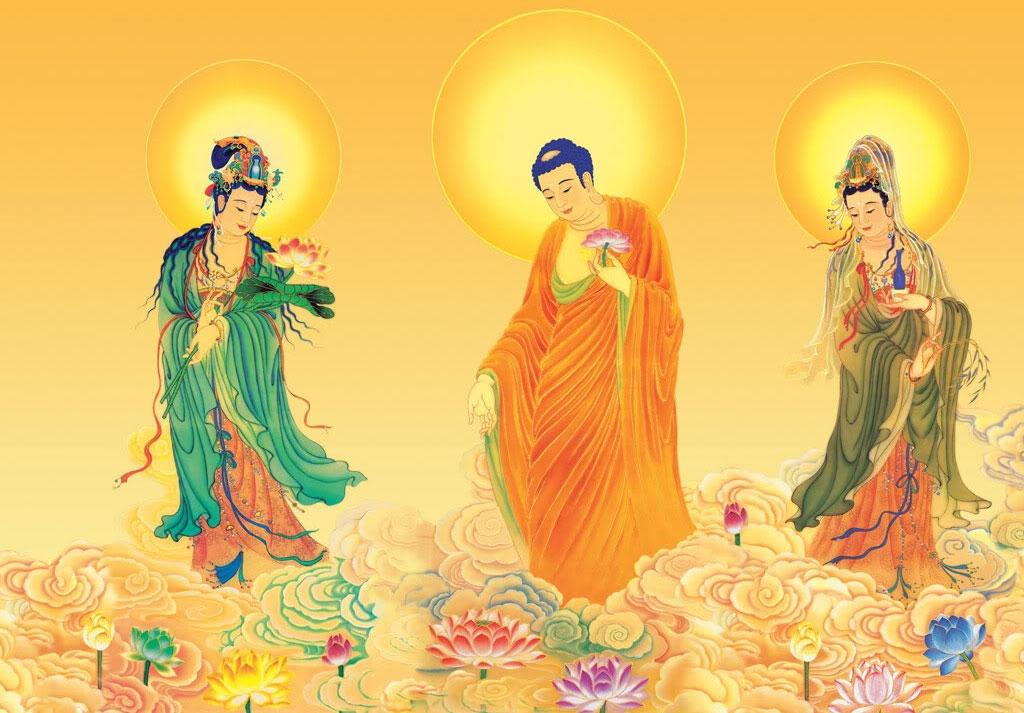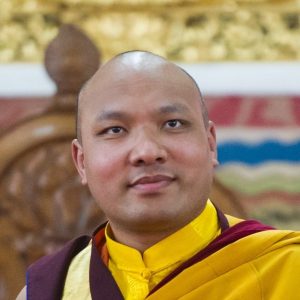
In my last article, we discussed three modes of belief in religious teachings: belief through direct experience (factual evidence); belief through irrefutable deduction (comparative analysis); and belief through testimony worthy of confidence (the words of a sage).
In Pure Land Buddhism, we believe in a Buddha called Amitabha who exists in a realm far distant from us, as related by Shakyamuni Buddha in the Contemplation Sutra. Although we cannot see him with our physical eyes, we can know of him from the three Pure Land sutras spoken by the historical Buddha, Shakyamuni.
Still, it is difficult for us to believe in him until some factual evidence is provided. Moreover, it is also difficult for us to understand Amitabha’s profound teachings (like the concept of deliverance for all sentient beings through recitation of his name) through analytic interpretation or irrefutable deduction. So, belief or initial faith in Pure Land Buddhism is almost entirely based on “belief through testimony worthy of confidence,” or words spoken by the historical Buddha.
The original intent of Shakyamuni Buddha, as stated in the Infinite Life Sutra
Being the wisest, kindest, and most eminently trustworthy and reliable person in human history, Shakyamuni Buddha, the Supremely Enlightened One, tells us in the Infinite Life Sutra his original intent in coming into the world. He says: “As the Tathagata, I regard beings of the Three Domains with boundless great compassion. The reason for my appearance in the world is to reveal teachings of the Way and save multitudes of beings by endowing them with real benefit.”
As the Infinite Life Sutra is the primary text of Pure Land Buddhism, “real benefit” here clearly refers to the liberation of sentient beings from the cycle of birth and death in the Three Domains through Amitabha’s deliverance. It was Shakyamuni’s intent to offer an ultimate solution for those wishing to end the suffering originating from birth and death in the Three Domains of our world.
In the first half of the Infinite Life Sutra, Shakyamuni introduces Amitabha Buddha as a “real” person like us (called Dharmakara) who lived at the time of Lokeshvararaja Buddha, in his world. Dharmakara vowed to “create” a Pure Land through his 48 causal vows, particularly the 18th Vow. Through his zealous and pure practices, he generated the karmic causes for sentient beings to be reborn there. His achievement of Buddhahood ten kalpas ago, and his name, Amitabha, which he offers to sentient beings to recite, are the karmic results of his unstinting efforts. Shakyamuni reveals Amitabha’s journey to Buddhahood in the hope that we will acknowledge him as a true and living Buddha, presently dwelling in the Land of Bliss, as stated in the Amitabha Sutra.
In the second half of the Infinite Life Sutra, Shakyamuni invites us to view the karmic causes and effects of Amitabha’s journey to Buddhahood from our perspective as ordinary beings. He tells us that Amitabha has now fulfilled his vows, particularly the 18th or Fundamental Vow, and that all those who aspire to be reborn in the Land of Bliss and recite his name (the karmic cause) will be reborn there (the karmic effect). Amitabha’s Fundamental Vow serves as the foundation of the Pure Land teachings and enables ordinary beings to develop an intimate relationship with him through recitation of his name.
With all these documented facts as evidence, Shakyamuni tries to convince us that Amitabha is real rather than legendary, and urges us to believe, accept, and follow his teachings so as to attain the real benefit of rebirth in his Pure Land. This is how the Infinite Life Sutra guides us to belief through factual evidence.
Two further approaches to belief for sentient beings
In the Contemplation Sutra, Shakyamuni takes another approach to convince us of the Pure Land teaching’s veracity—belief through comparative analysis or irrefutable deduction. He compares the different ways of attaining rebirth in the Land of Bliss: rebirth through his own teaching (by practicing the meditative and non-meditative virtues) and rebirth through Amitabha’s teaching (by practicing exclusive Amitabha-recitation). He also relates at length how ordinary beings of different aptitudes and capacities can be reborn in Amitabha’s realm. After his exposition and analysis, he concludes that Amitabha-recitation is the best, easiest, and most direct way to attain rebirth in the Land of Bliss.
Finally, he delivers the Amitabha Sutra. Here, he simply points out that Amitabha-recitation is the only practice enabling direct rebirth in the Land of Bliss and tells us to “hold fast” to Amitabha’s name. He invites all Buddhas in the six directions to endorse, verify, and extol the fact that rebirth is assured through exclusive Amitabha-recitation. Shakyamuni intends in this way to convince us to believe in this inconceivable teaching through the golden words spoken by the Buddhas—in other words, “testimony worthy of confidence.”
The relationship between the three Pure Land sutras
In the Commentary on the Contemplation Sutra, Master Shandao says: “The 48 Vows of the Infinite Life Sutra explain only that exclusive recitation of Amitabha Buddha’s name leads to rebirth in the Land of Bliss. The Amitabha Sutra indicates that, whether for [just] one day or seven days, recitation of Amitabha’s name results in rebirth [there]. The passages on meditative and non-meditative virtues in this sutra [the Contemplation Sutra] underscore only that exclusive name-recitation leads to rebirth [in the Pure Land].”
Shakyamuni Buddha takes three different approaches in the Pure Land sutras to convince people of Amitabha’s deliverance. Ultimately, he aims to trigger our initial faith and aspiration for rebirth through the exclusive practice of Amitabha-recitation. In this way, we can realize the “real benefit” spoken of in the Infinite Life Sutra and liberate ourselves from the cycle of birth-and-death.
The most direct, and most difficult, way to believe in the Pure Land teachings
The Amitabha Sutra is supposed to elucidate the simplest and the most direct way to accept the teaching of Amitabha’s deliverance; but it is also the most difficult, because ordinary, iniquitous beings are generally shallow in the roots of virtue. At the end of the Amitabha Sutra, Shakyamuni indicates that, for ordinary beings, the most difficult of all his teachings to believe in are those on Amitabha Buddha and his Land of Bliss.
Why are some people skeptical, and reluctant to believe what Shakyamuni said? Conversely, why are others open-minded enough to readily accept his teachings, particularly those concerning the existence of Amitabha Buddha and his Land of Bliss? In Buddhism, the answer is simple. The latter have deep roots of virtue, while the former do not.
In the Amitabha Sutra, Shakyamuni Buddha deliberately selects Shariputra to be the interlocutor and calls on him no less than 38 times. This is because Shariputra is foremost in wisdom among Shakyamuni’s disciples; thus, his roots of virtue are deep enough to believe in this teaching. It is interesting to note that faith and wisdom are both roots of virtue and so are interrelated. We will discuss the roots of virtue in detail later on.













